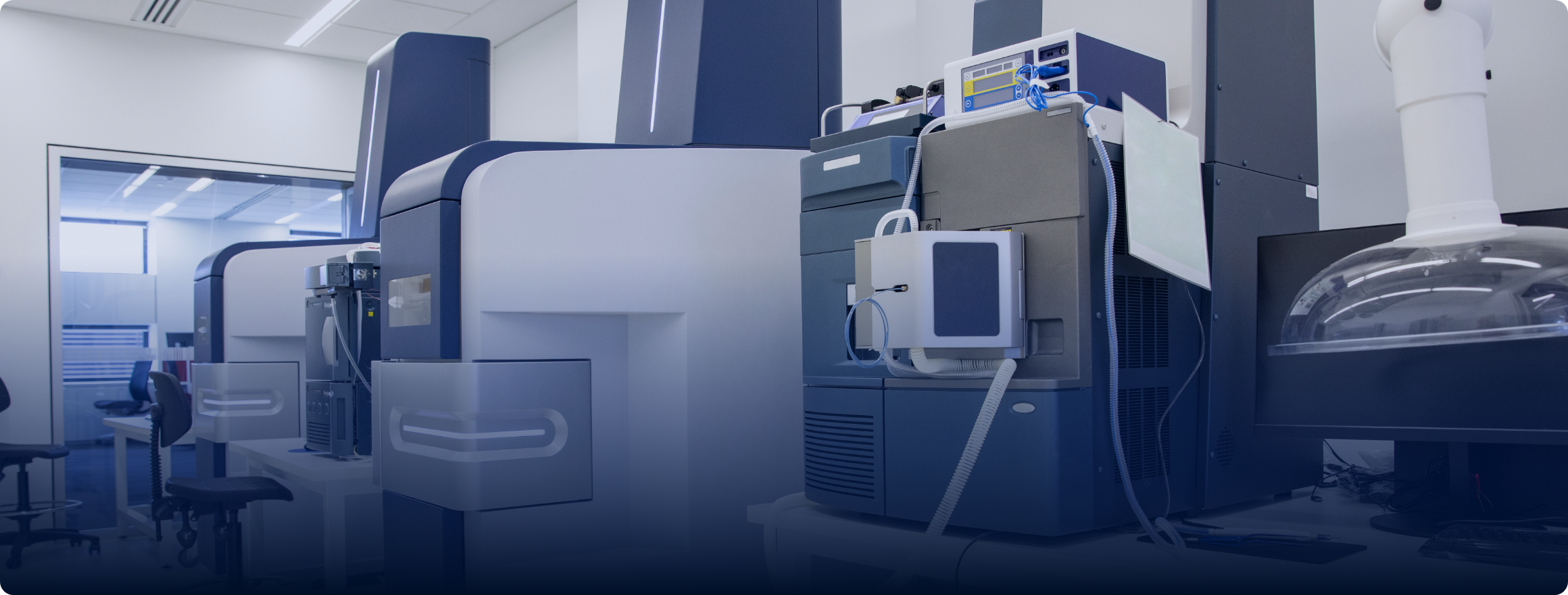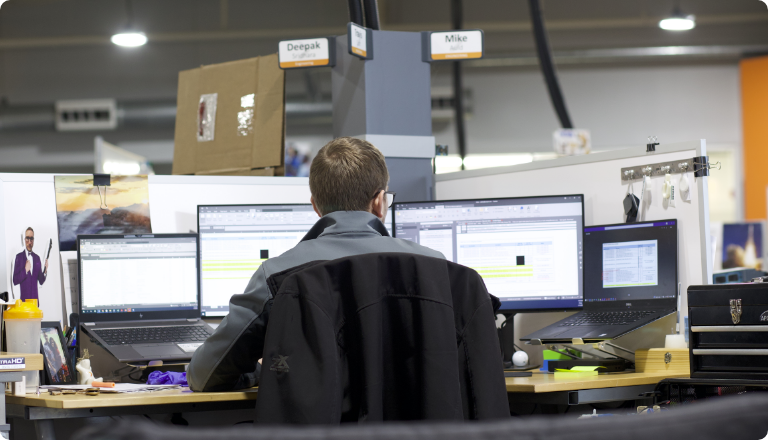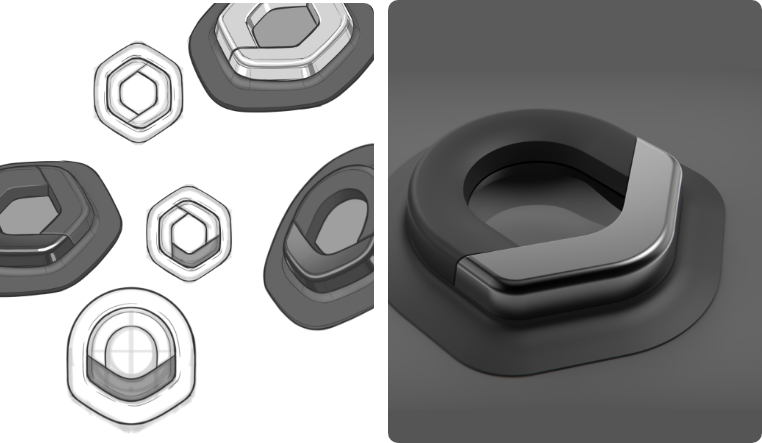
Hindsight may always be 20/20, but imagining tomorrow’s advanced technologies is the work of the present. Think of the Apple Watch. For many consumers today, it’s an indispensable device, but back in 2012, it was merely the audacious spark of an idea to create a wrist-worn iPhone.
It’s that kind of progressive mindset that drives Kaleidoscope Innovation to nurture a team of blue-sky thinkers who take on the big “What if?” questions, not just to imagine what’s possible but also to understand what the path forward entails. One such recent exploration focused on the potential development of a wearable biomarker sensor tailored for subjects volunteering for clinical research.
What’s the Current Biomarker Landscape
While traditional, large-molecule hormones like insulin and testosterone have been known and studied since the early twentieth century, we now realize there are many other “dark” hormones circulating in human serum. Some estimates assert that there are as many as 10,000 unknown physiologically active nano-proteins. (Blume, Nature Comm, 11, Article 3662 (2020))
Between the well-known and the dark unknown, an ever-increasing number of microprotein biomarkers are being characterized and evaluated as disease markers, drug targets, and indicators of therapy effectiveness. Studying and sampling these biological indicators is a principal activity of modern clinical research. New technologies using mass and infrared spectroscopy are bringing these proteins into the clinical light.
A wearable biomarker sensor like the one the Kaleidoscope team was exploring would feature advanced technology that could collect information and monitor health biomarkers known to be significant in treatment monitoring. In the case of the theoretical wearable, the device would be designed specifically for cancer patients undergoing chemotherapy. The premise behind such a device would be to gather key data about biomarkers circulating in the body fluids of cancer patients to identify early warning signs and inform treatment adjustments with the ultimate goal of improving outcomes and saving lives.
Where to Start
Yes, the Apple Watch can monitor heart and respiratory rate, wrist temperature, blood oxygen levels, and sleep duration; it can also provide irregular rhythm notifications, ECG recordings, and fall detection. It would be easy to imagine that this established technology provides a baseline on which to build our concept. That thinking would be wrong for many reasons. First and foremost, today’s small mass spectrometers used in cancer research are benchtop models that are roughly 40 square feet, while the larger ones with the highest degree of sensitivity and accuracy can be over 100 square feet. Compressing that amount of technology into something you can strap to your wrist is simply not currently feasible.
But that’s not even the first consideration. The questions that need to be asked are much more elemental to the project.

What Are We Measuring?
In developing a cancer and chemotherapy monitoring system like this, first and foremost, you need to know what to look at—these are the biomarkers (cytokine molecules) that circulate in the blood. Any given cytokine can be a marker for any number of issues, for example, different types of inflammation in the body. In developing a tool for cancer patients, it will be essential to monitor more than one type of cytokine to be able to see a comprehensive picture.
Measuring cytokine levels in cancer patients is not commonly done, as home-based measurement capability does not exist, and lab-based measurement requires invasive blood draw and wet chemistry analysis using liquid chemistry mass spectrometry techniques and highly skilled technicians. The advantages of a wearable, home-based system lie in developing immunoassay techniques that automate sample collection and analysis using a miniaturized sweat-based aptamer sensor.
Aptamers are synthetic, single-stranded DNA or RNA molecules that can specifically bind to a target cytokines. Think of the cytokine as a lock, and an aptamer as a key. When these two get together, they connect in a one-to-one correspondence. When the aptamers lock onto a cytokine, they can release or change state in a way that we can measure electronically and thus make some kind of analysis.
But identifying the relevant cytokines and aptamers is just the beginning. Because every person’s body chemistry is different, the normal state baseline will be unique to each patient. You also need to determine the normal concentration levels of cytokines in an individual patient.
To determine the baseline, patients would need to wear the device for a period, and the doctor would need to review the incoming data collected. Once they have the baseline, the doctor can set customized alert levels that trigger notification when sensor readings are high or low. All this amounts to the device needing to be a highly tailored treatment scenario, not a one-sensor-does-it-all.
The Collection Mechanism
The analytic subsystems of the biomarker sensor will require liquid chromatography (a form of liquid chemistry). In other words, we would need to get a liquid from the patient in the form of either sweat or blood.
Most of the wearables in development today use sweat because it can be conveniently generated and collected from the wearer’s skin. The wearable biomarker sensor would need to generate sweat by electrically stimulating the skin in the presence of a certain kind of chemical. Cancer patients are generally not able to generate sufficient sweat by exercising without stimulation.
The challenge with this approach is that the concentration of key biomarkers in sweat is significantly lower than in blood. Direct blood sampling would be ideal, but highly impractical. For that, the device would need to employ a microneedle jab periodically throughout the day to produce a tiny blood sample that could be used for analysis.
In either the sweat or blood testing scenario, the system would need a mechanism for collecting that sample in a collection wafer, so it can be transmitted to a chemical sensor element that has the aptamers on it. This way, aptamers trigger or don’t trigger based on the concentration levels found in the sample. As previously mentioned, each wafer would likely need to be customized to the patient and/or the type of cancer that they have.
Now we must consider aspects of the sensor. It will need to be disposable. What other issues would we possibly encounter? Would sunblock interfere? Would a particular kind of body wash affect the pH of the chemistry and therefore undermine the system?
All these scenarios need to be figured out by a resource team that includes experts in material science, bioengineering, electronics, and data analytics.
What Happens to the Data?
Once the sample is collected and the data has been generated, it will likely have to be transmitted either to a phone app or a base station in the patient's house. Not only would the base station need to be set to contact the doctor's office every day, but the doctor would need to be able to communicate back.
Here’s an example of how the communications would work: A patient’s physician sets alarm levels for a range of biomarkers. When those fall outside the acceptable baseline, the doctor’s office is notified, and they, in turn, alert the patient and say, “Ms. Jones, we’re concerned about your numbers in this area and would like you to call and schedule an appointment for tomorrow.”
In another scenario, the doctor might simply want to keep tabs on how a patient reacts to a particular type of chemotherapy, or what the recovery cycle looks like, so they know at what rate to advance treatment.
Even still, logistics must be considered. If it’s an app that's on a patient’s phone, where does the data go from there? What if the patient doesn’t have or know how to use a smartphone? How does a doctor treating 200 patients manage the volume of incoming data? What are the HIPAA implications? What if someone illegally accesses the data? These are issues that would have to be considered and addressed well in advance. That means inventing the entire universe of the product, of which the patient experience is only one.
Anticipating the Hurdles
As a medical device, the wearable sensor would be regulated by the FDA. When Apple sought FDA permission and approval just to put a heart monitoring app onto the iPhone, they spent in excess of 1 billion dollars on this simple, noninvasive capability.
Because a biomarker sensor is a true medical device, a wearable version would be highly regulated by the FDA, which requires a series of clinical trials, initially done in very small numbers of patients, before advancing to efficacy trials. These would be analogous in scope to the pharmacology trials that big pharma companies undergo for drug development. They involve hundreds or thousands of patients. In the biomarker sensor example, you would need to physically manage the trial process, enlisting a mass of patients, drawing blood from them 24/7, and comparing the aptamer-based sensor data to the analytical lab data. Figuring out what the data means would be the final step.
Furthermore, the wearable biomarker sensor with electrochemical sweat generation would likely be considered a combination device, meaning it is partially drug and partially device. In this case, the FDA would decide the primary mode of action and assign it to the most appropriate division within the agency. From there, a complex regulatory path dictates a specific sequence and process. The first phase would establish requirements, and for medical devices, the FDA demands proof through data. It’s not just the data that is regulated, but also the mechanisms for obtaining that data that are regulated, and that means validating the tests in a controlled, well-documented process.
The Kaleidoscope team concluded that yes, the list of hurdles is extensive, but they’re not insurmountable. Yes, it would be a massive, complicated, and extremely expensive effort, but one that could feasibly be undertaken by the government or a giant corporation. For context, a simple drug-eluting stent, roughly eight years ago, cost $600 million from conception to launch. A device like the wearable biomarker sensor could easily be a $1 billion development activity.
What’s Here and What Could Be Ahead
There are some development efforts currently in the works aimed at miniaturizing such a system, most notably at Purdue University. The institution’s R&D team has taken many elements of a biomarker sensor and miniaturized them down to a 55-pound unit, which is at least a factor of 10 to 20 higher than what a wearable system would require. The unit uses a finger-prick test to draw blood into a small capillary tube. The patient then inserts their blood sample into the spectrometer base station, which is roughly the size of a toaster oven. There is no built-in data transfer system yet, and there are some other missing elements, but it’s a beginning.
There is also research being done on sweat-based systems in college labs around the country (and likely also in commercial labs, but their work isn’t available to the public).
So, what is realistically possible in 10 years? It seems feasible that there will be some kind of wearable device that features a removable sweat sensor. The user would wear the sensor for a set time, remove it, and plug it into a base station where the sample is analyzed in a unit that has enough physical space to do the analytic chemistry that's involved.
In this scenario, the patient doesn't have to be tethered to the monitoring device. Once they put the wafer in, they're free to go about their day, just as they did while wearing the device to collect the sample. While this kind of system would be a step down from the full-blown “set-it-and-forget-it” device a patient puts on in the morning and takes off at night, it is an essential step toward that ideal.

Anticipating the Future Today
This internal “blue sky” thought exercise was designed to share findings with Kaleidoscope Innovation’s management team so that we’re prepared to understand the scope when a client or other entity asks what it would take to make a wearable cancer sensor. The work we completed examined at the highest level what would be required not just to anticipate the development of this transformative medical device but also to imagine what we could be doing right now…or if we should even be doing it.
The missing parts of this exploration are business-related. An undertaking of this magnitude would require the attention of a federal researcher who could request a government research grant to start work on the essential elements. At the same time, a large medical device company would likely want to conduct an in-depth analysis to determine the market potential and what a system like this would cost to develop. Armed with a more complete picture, it would then be time to look for investors.
A Future-Forward Partner
The wearable mass spectrometer project is one of many transformative ideas being explored at Kaleidoscope Innovation headquarters in Cincinnati, some of them are being conducted in collaboration with our parent company Infosys, which exponentially expands our digital expertise and resources.
If your organization has a big idea that needs visionary horsepower to explore, assess, and develop, get in touch. We’re ready to dive in.
Back to Insights + News